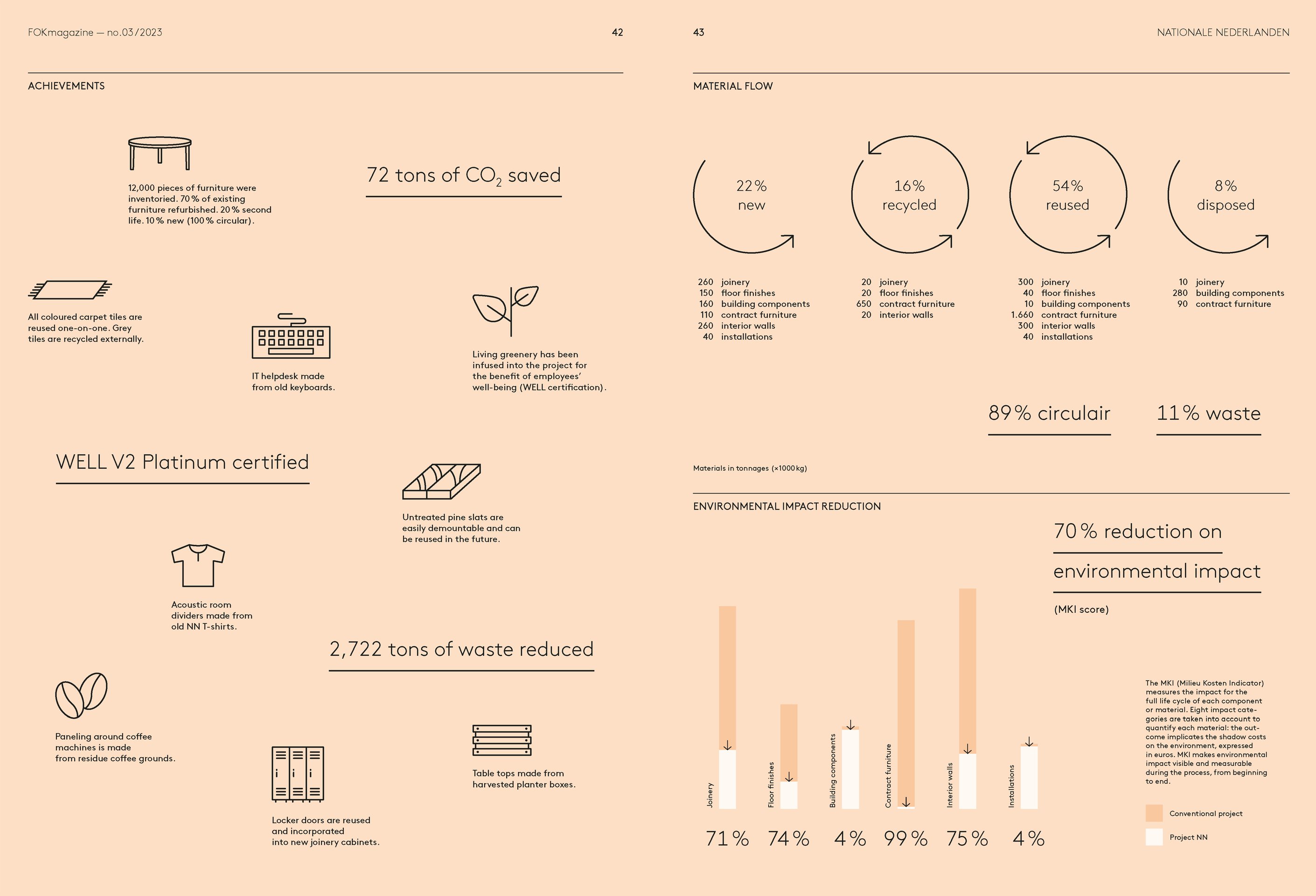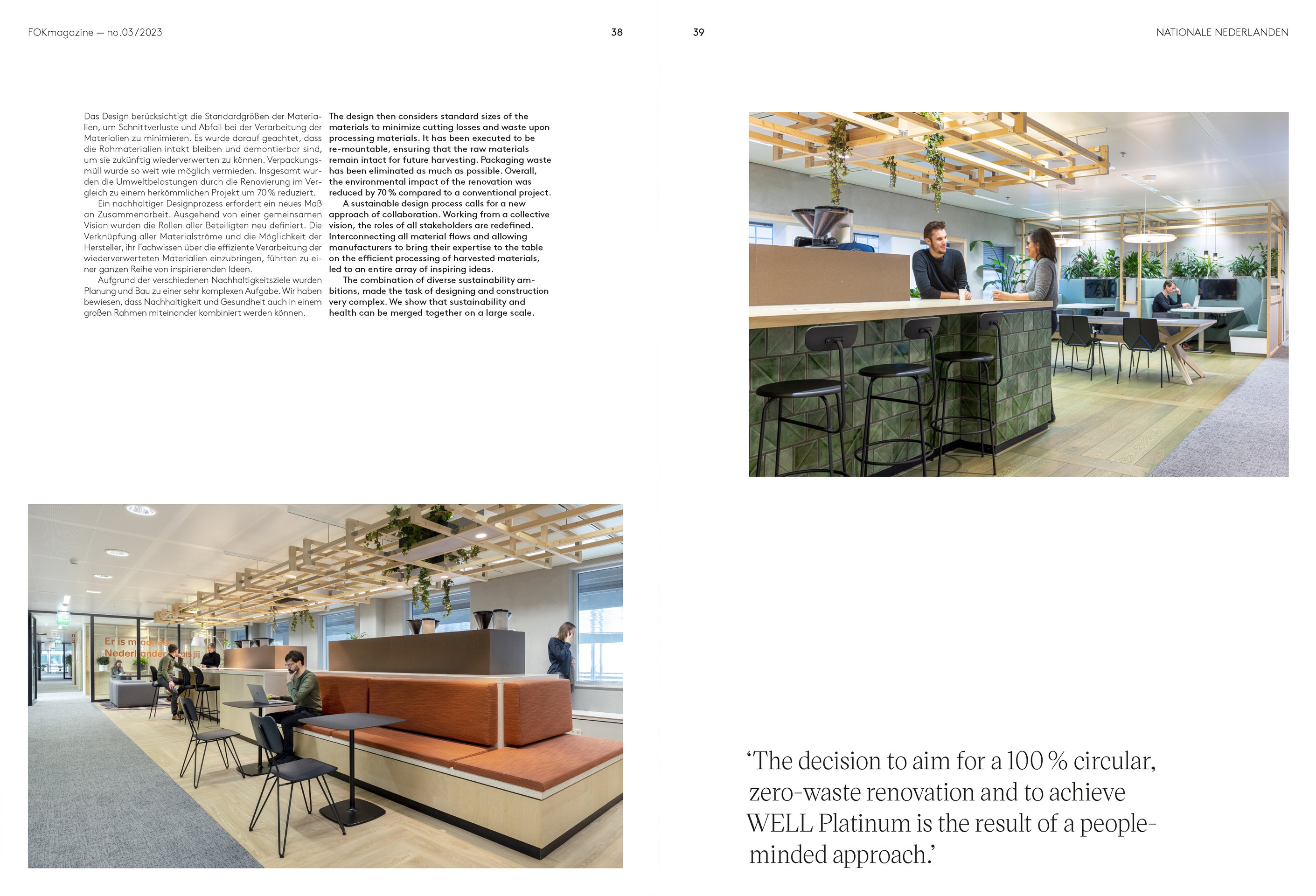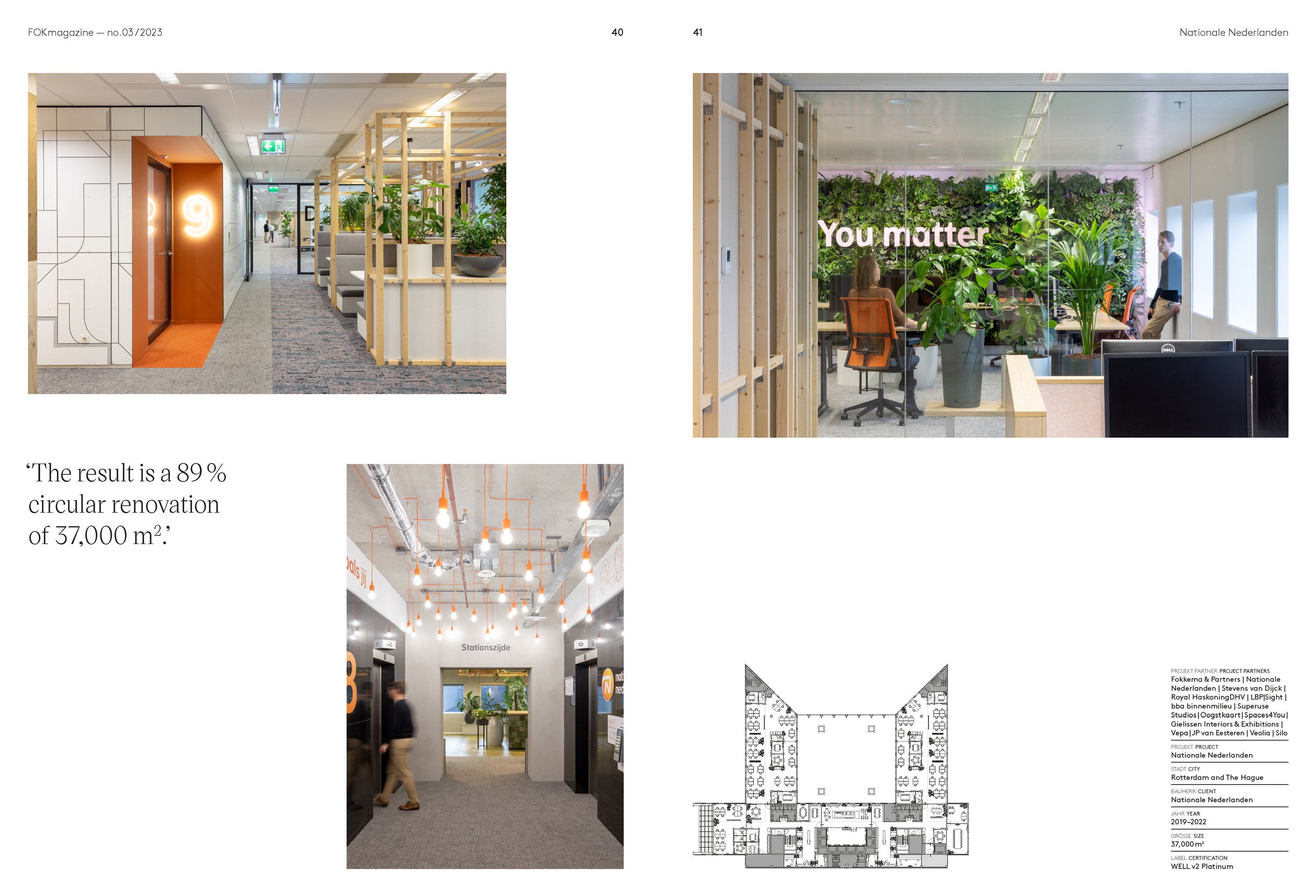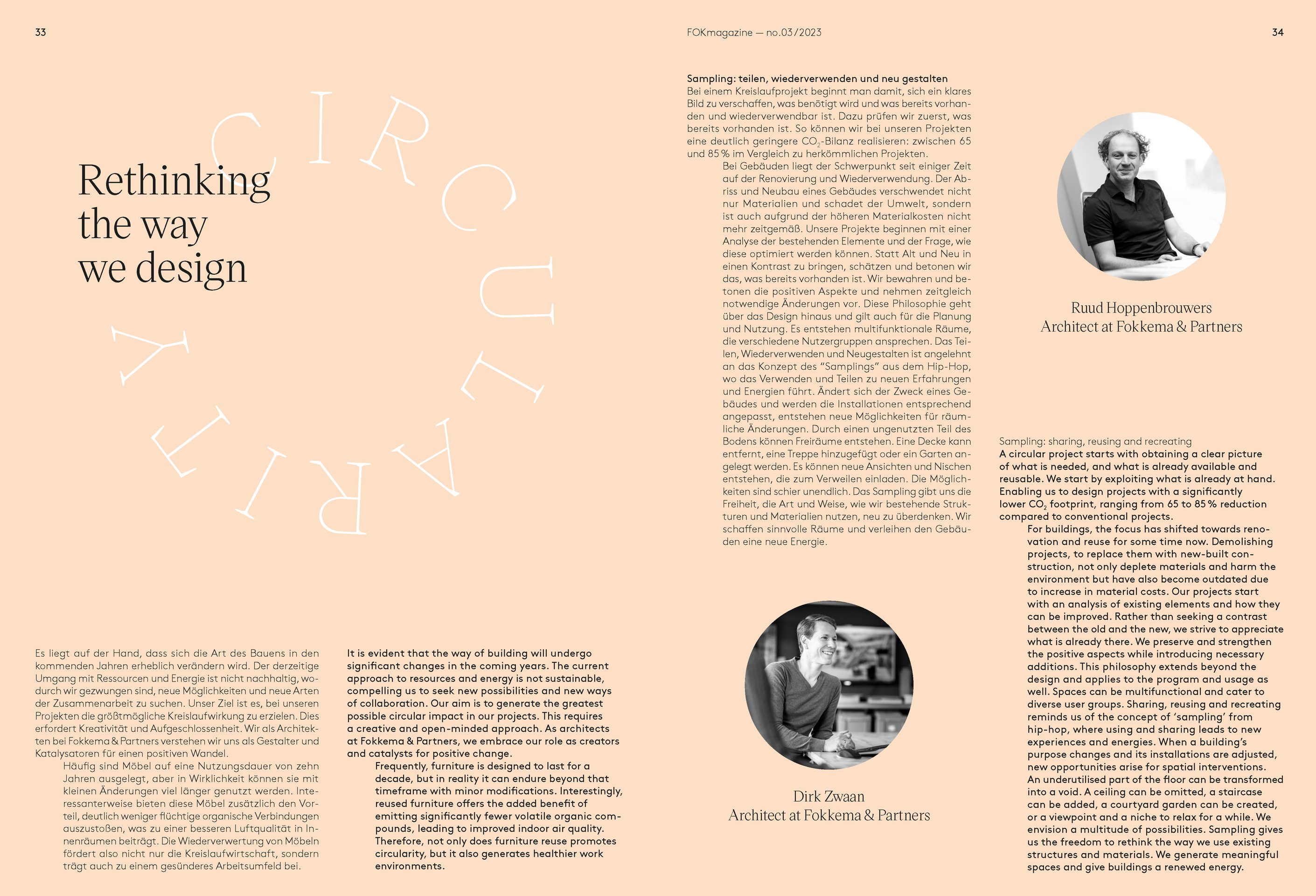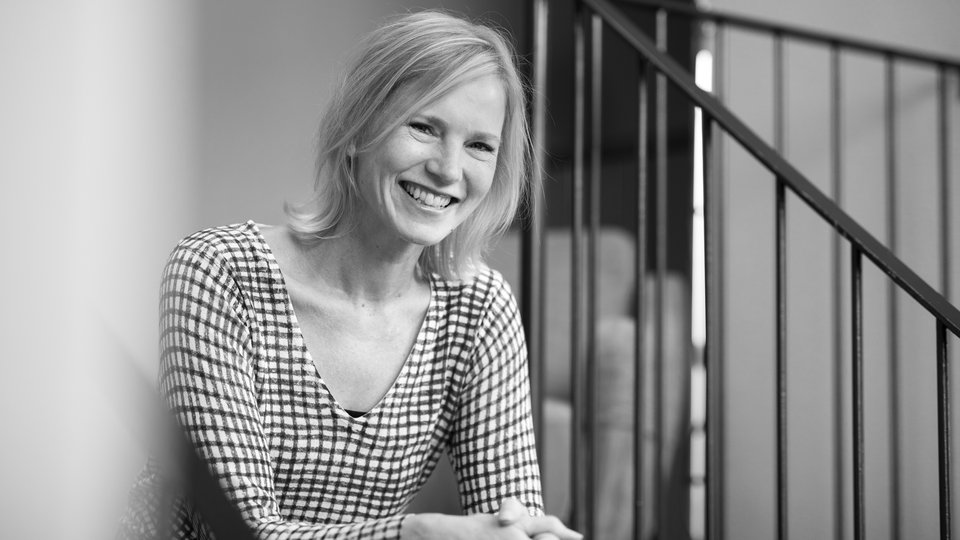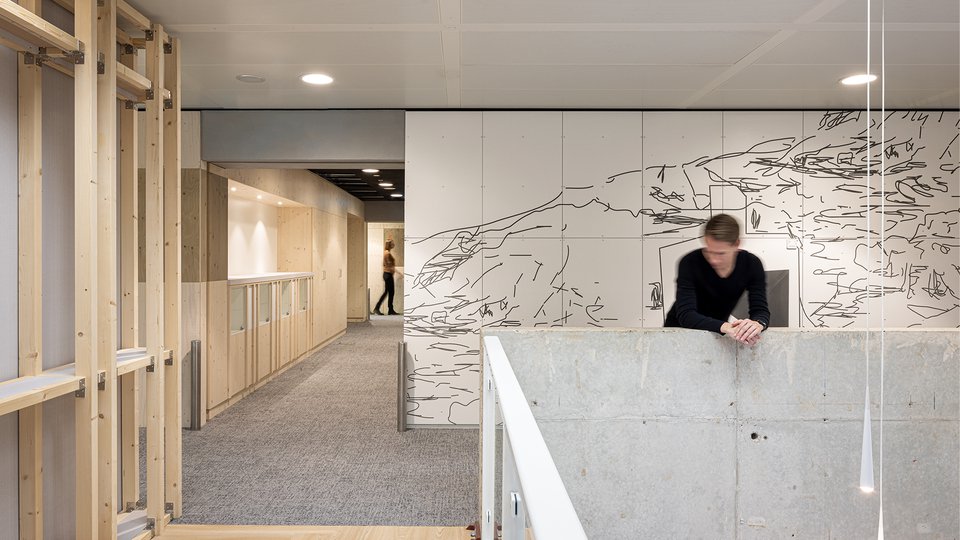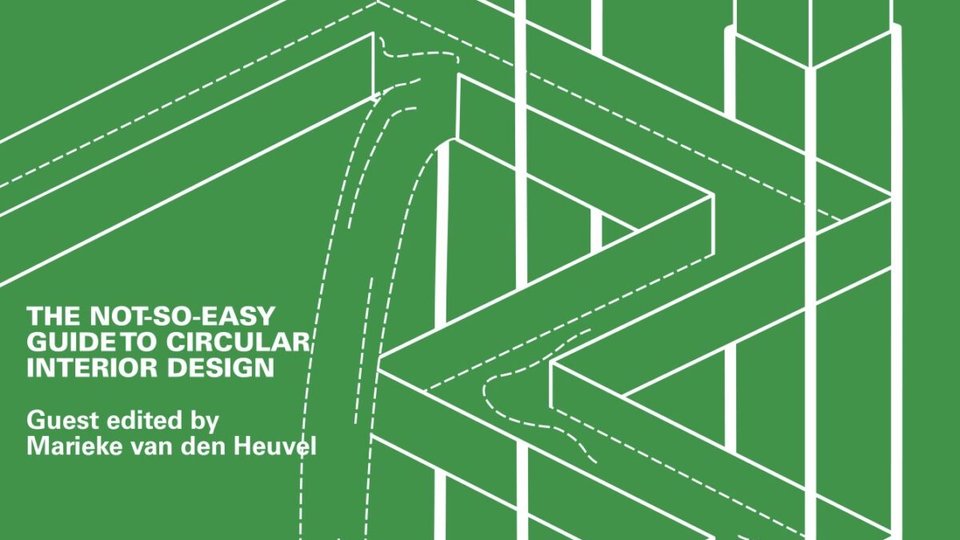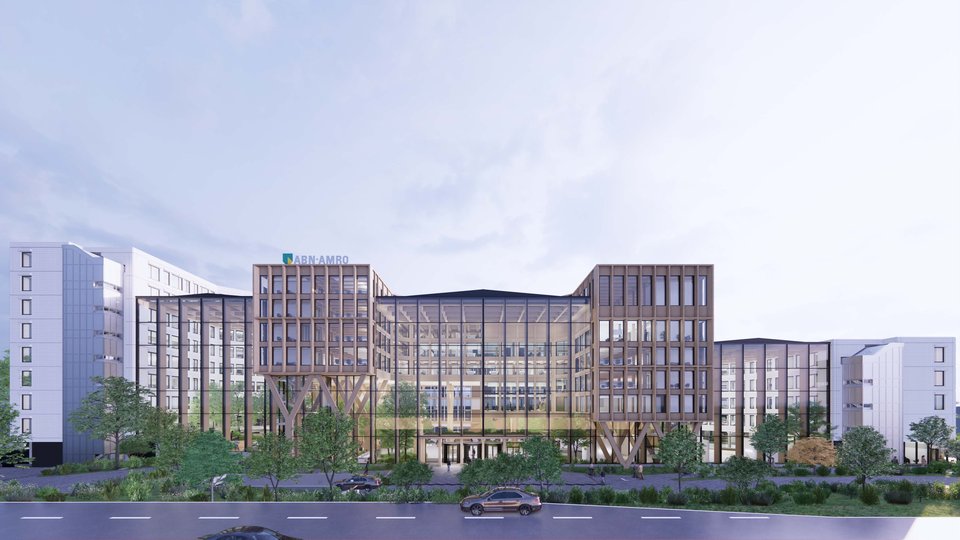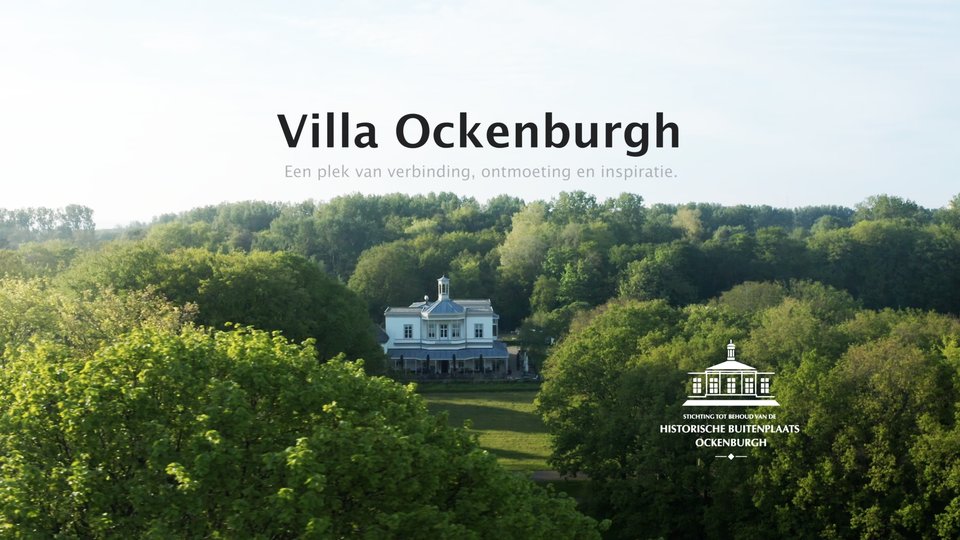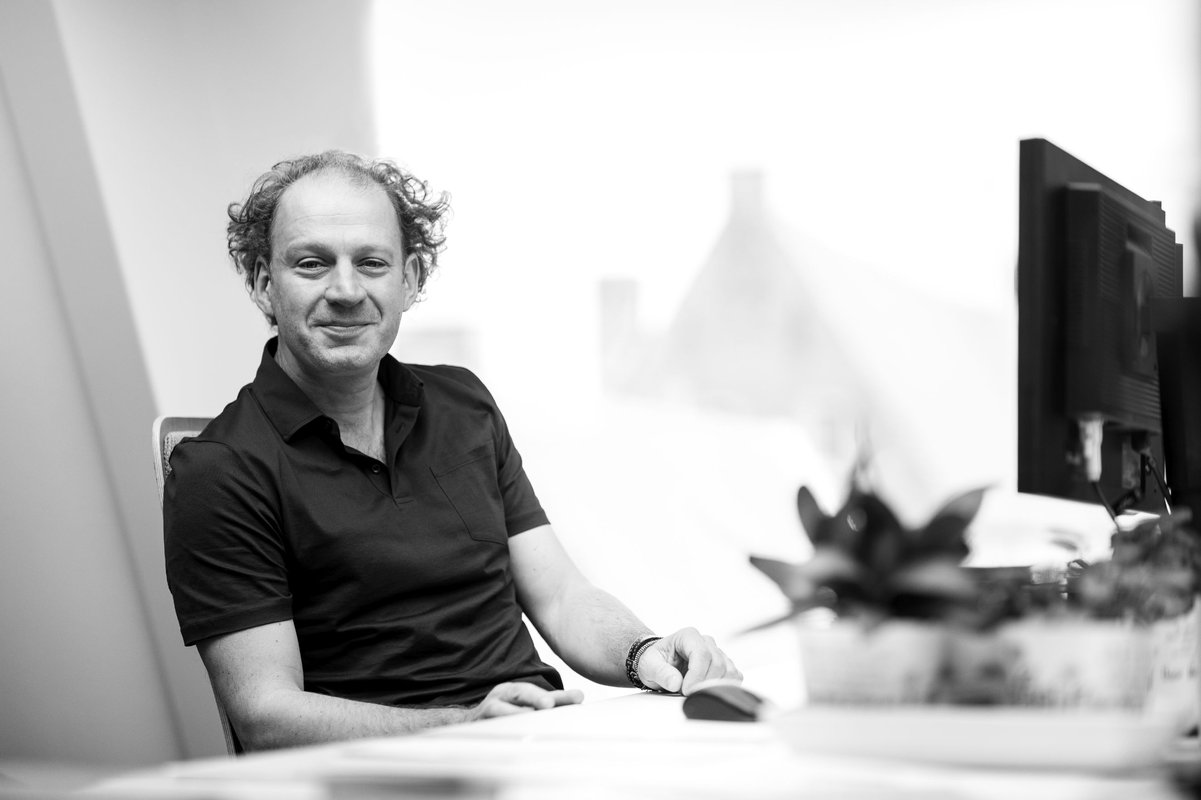
Circularity: How to rethink the way we design
It is evident that the way of building will undergo significant changes in the coming years. The current approach to resources and energy is not sustainable, compelling us to seek new possibilities and new ways of collaboration. Our aim is to generate the greatest possible circular impact in our projects. This requires a creative and open-minded approach. As architects at Fokkema & Partners, we embrace our role as creators and catalysts for positive change.
The decision to aim for a 100% circular, zero-waste renovation and to achieve WELL Platinum is the result of a people-minded approach.

Frequently, furniture is designed to last for a decade, but in reality it can endure beyond that timeframe with minor modifications. Interestingly, reused furniture offers the added benefit of emitting significantly fewer volatile organic compounds, leading to improved indoor air quality. Therefore, not only does furniture reuse promotes circularity, but it also generates healthier work environments.
Sampling: sharing, reusing and recreating
A circular project starts with obtaining a clear picture of what is needed, and what is already available and reusable. We start by exploiting what is already at hand. Enabling us to design projects with a significantly lower CO2 footprint, ranging from 65 to 85% reduction compared to conventional projects.
For buildings, the focus has shifted towards renovation and reuse for some time now. Demolishing projects, to replace them with new-built construction, not only deplete materials and harm the environment but have also become outdated due to increase in material costs. Our projects start with an analysis of existing elements and how they can be improved. Rather than seeking a contrast between the old and the new, we strive to appreciate what is already there. We preserve and strengthen the positive aspects while introducing necessary additions.
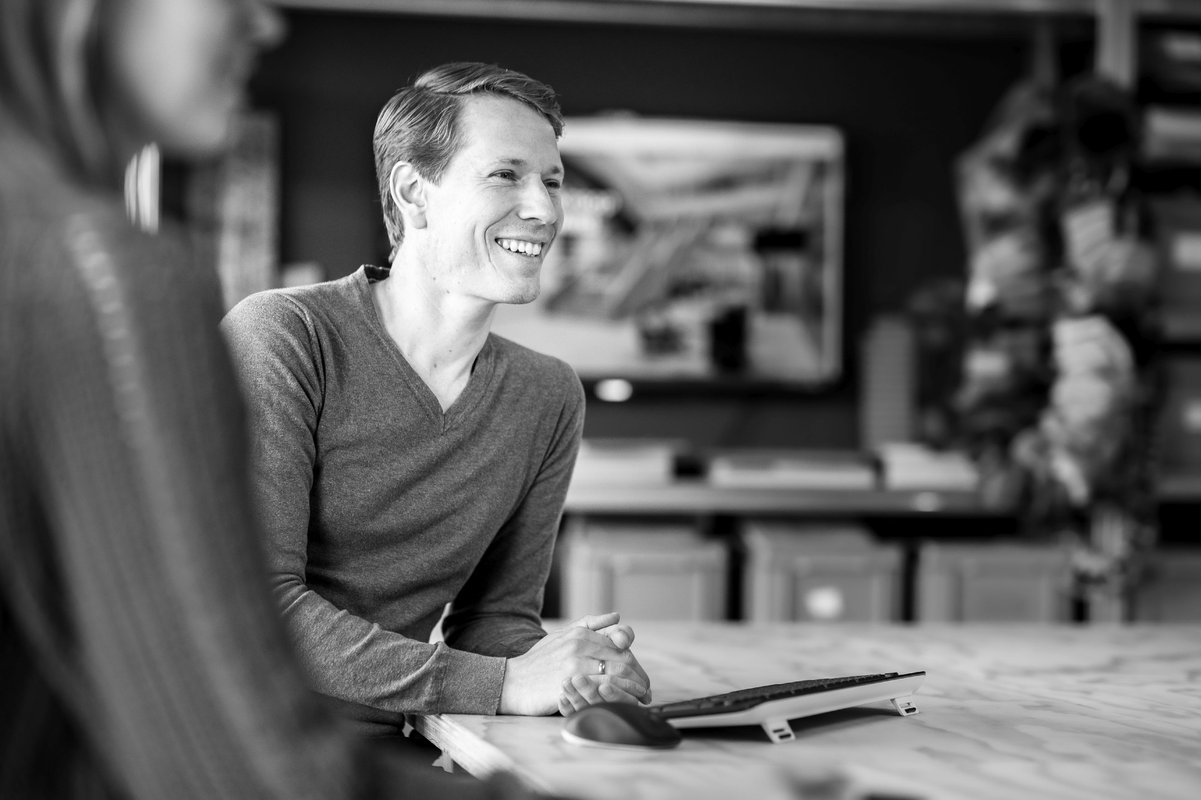
This philosophy extends beyond the design and applies to the program and usage as well. Spaces can be multifunctional and cater to diverse user groups. Sharing, reusing and recreating reminds us of the concept of 'sampling' from hip-hop, where using and sharing leads to new experiences and energies. When a building's purpose changes and its installations are adjusted, new opportunities arise for spatial interventions. An underutilised part of the floor can be transformed into a void. A ceiling can be omitted, a staircase can be added, a courtyard garden can be created, or a viewpoint and a niche to relax for a while. We envision a multitude of possibilities. Sampling gives us the freedom to rethink the way we use existing structures and materials. We generate meaningful spaces and give buildings a renewed energy.
Read more in the full article via this link / Lesen Sie mehr im vollständigen Artikel über diesen Link
